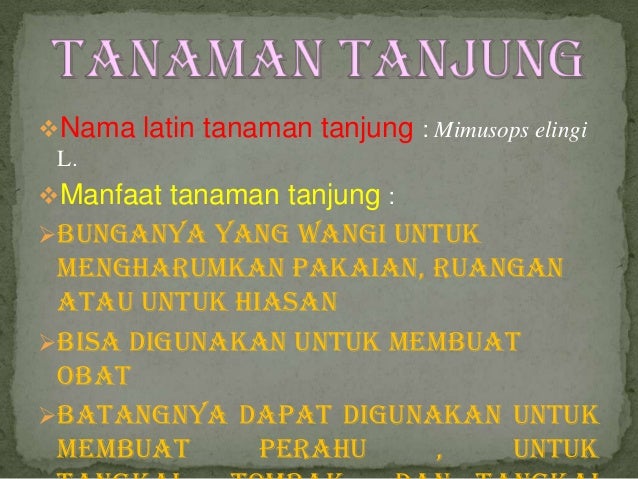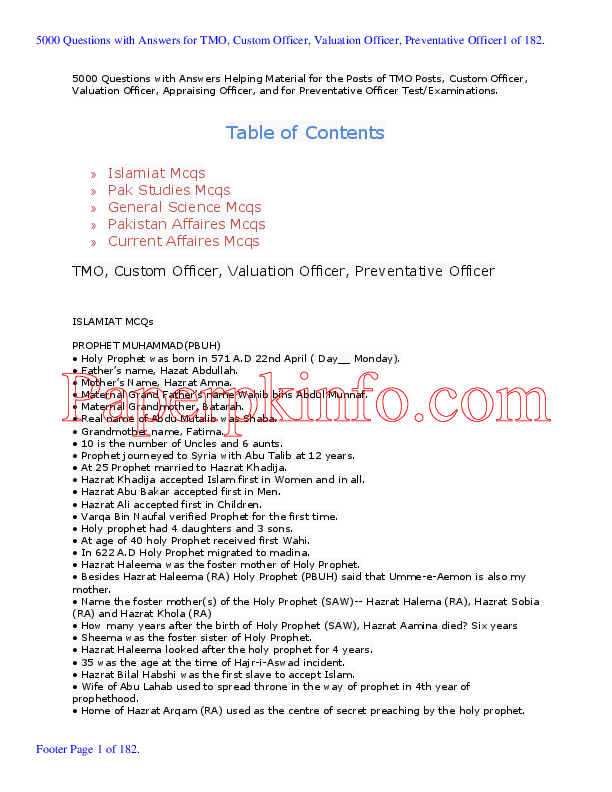Nama Lati Dan Divisi Pakis
Pernahkah anda membaca puisi - puisi yang dikarang oleh taufik ismail?ada banyak sekali tentunya, bahkan lagu - lagu yang dinyanyikan bimbo liriknya ditulis oleh taufik ismail.Buah tangan dari pria kelahiran Bukittinggi,Sumatera Barat 25 Juni 1935 ini memang luar biasa, salah satunya adalah sebuah puisi yang berejudul kerendahan hati. Saya mengetahuinya ketika menyaksikan acara Jika Aku Menjadi Special Ramadhan yang ditayngkan stasiun Trans TV.Sungguh setiap untaiankatanya walaupu sederhan tapi maknanya begitu dalam,apalagi ketika astri ivo membacakannya diiringi petikan akustik gitar nan syahdu seakan gemuruh hati ini.ini dia lirik puisi tersebut.Kalau engkau tak mampu menjadi beringinyang tegak di puncak bukitJadilah belukar, tetapi belukar yang baik,yang tumbuh di tepi danauKalau kamu tak sanggup menjadi belukar,Jadilah saja rumput, tetapi rumput yangmemperkuat tanggul pinggiran jalan. KemarinKau kirimkan aku sebuah cinta yang utuhDidalam sebuah kotak imanTerbungkus kertas hijrahAda sebuah pita jihad di atasnya danKau kirim lewat angin IslamHari iniKau RabbkuRuku'ku tunduh sujudku jatuhLewat air mata iniIngin kumohon padaMuBeri aku kekuatan Ya RabbiTuk jaga cinta yang kau titipiAku tetap berlari ke barisan terdepanMembawa cinta ini lewat ridhoMuKarena Kau tahuEsokAku akan pulang menemuimu danIngin kurasakan nikmat terbesar lainnyaMampu menengadahkan wajahkuMenatapmu sambil menyerahkan cinta yang tetap utuhYang terakhir.Ridhokah Kau kupanggil Kekasih.
'Aku bukan muslimah yang baik'ketika musimah lain sibuk dengan membaca dan mentadburi Al-Quran,aku sibuk dengan mendengrkan lagu picisan yang mwmbuatku semakin jauh dari-Nya.ketika muslimah sibuk dengan menambahka hapalan Al-Quran,aku malah sibuk menghapalkan lirik - lirik lagu.ketika muslimah lain malu menampakan wajah dan fotonya,aku malah sibuk meng-upload fotoku agar bisa dilihat semua orang.ketika muslimah lain sibuk dengan menundukan pandangannya,aku malah sibuk dengan melihat wajah tampan yang bukab mahramku.NB: dari catatan abu yahya. An Illustrated History of ComputersPart 2Just a few years after Pascal, the German Gottfried Wilhelm Leibniz (co-inventor with Newton of calculus) managed to build a four-function (addition, subtraction, multiplication, and division) calculator that he called the stepped reckoner because, instead of gears, it employed fluted drums having ten flutes arranged around their circumference in a stair-step fashion. Although the stepped reckoner employed the decimal number system (each drum had 10 flutes), Leibniz was the first to advocate use of the binary number system which is fundamental to the operation of modern computers.
Leibniz is considered one of the greatest of the philosophers but he died poor and alone.Leibniz's Stepped Reckoner (have you ever heard 'calculating' referred to as 'reckoning'?)In 1801 the Frenchman Joseph Marie Jacquard invented a power loom that could base its weave (and hence the design on the fabric) upon a pattern automatically read from punched wooden cards, held together in a long row by rope. Descendents of these punched cards have been in use ever since (remember the 'hanging chad' from the Florida presidential ballots of the year 2000?).Jacquard's Loom showing the threads and the punched cardsBy selecting particular cards for Jacquard's loom you defined the woven pattern photo © 2002 IEEEA close-up of a Jacquard cardThis tapestry was woven by a Jacquard loomJacquard's technology was a real boon to mill owners, but put many loom operators out of work.

Angry mobs smashed Jacquard looms and once attacked Jacquard himself. History is full of examples of labor unrest following technological innovation yet most studies show that, overall, technology has actually increased the number of jobs.By 1822 the English mathematician Charles Babbage was proposing a steam driven calculating machine the size of a room, which he called the Difference Engine. This machine would be able to compute tables of numbers, such as logarithm tables. He obtained government funding for this project due to the importance of numeric tables in ocean navigation. By promoting their commercial and military navies, the British government had managed to become the earth's greatest empire. But in that time frame the British government was publishing a seven volume set of navigation tables which came with a companion volume of corrections which showed that the set had over 1000 numerical errors. It was hoped that Babbage's machine could eliminate errors in these types of tables.
But construction of Babbage's Difference Engine proved exceedingly difficult and the project soon became the most expensive government funded project up to that point in English history. Ten years later the device was still nowhere near complete, acrimony abounded between all involved, and funding dried up. The device was never finished.A small section of the type of mechanism employed in Babbage's Difference Engine photo © 2002 IEEEBabbage was not deterred, and by then was on to his next brainstorm, which he called the Analytic Engine. This device, large as a house and powered by 6 steam engines, would be more general purpose in nature because it would be programmable, thanks to the punched card technology of Jacquard. But it was Babbage who made an important intellectual leap regarding the punched cards.
In the Jacquard loom, the presence or absence of each hole in the card physically allows a colored thread to pass or stops that thread (you can see this clearly in the earlier photo). Babbage saw that the pattern of holes could be used to represent an abstract idea such as a problem statement or the raw data required for that problem's solution.
Babbage saw that there was no requirement that the problem matter itself physically pass thru the holes.Furthermore, Babbage realized that punched paper could be employed as a storage mechanism, holding computed numbers for future reference. Because of the connection to the Jacquard loom, Babbage called the two main parts of his Analytic Engine the 'Store' and the 'Mill', as both terms are used in the weaving industry. The Store was where numbers were held and the Mill was where they were 'woven' into new results. In a modern computer these same parts are called the memory unit and the central processing unit (CPU).The Analytic Engine also had a key function that distinguishes computers from calculators: the conditional statement. A conditional statement allows a program to achieve different results each time it is run. Based on the conditional statement, the path of the program (that is, what statements are executed next) can be determined based upon a condition or situation that is detected at the very moment the program is running.You have probably observed that a modern stoplight at an intersection between a busy street and a less busy street will leave the green light on the busy street until a car approaches on the less busy street.
This type of street light is controlled by a computer program that can sense the approach of cars on the less busy street. That moment when the light changes from green to red is not fixed in the program but rather varies with each traffic situation. The conditional statement in the stoplight program would be something like, 'if a car approaches on the less busy street and the more busy street has already enjoyed the green light for at least a minute then move the green light to the less busy street'. The conditional statement also allows a program to react to the results of its own calculations. An example would be the program that the I.R.S uses to detect tax fraud. This program first computes a person's tax liability and then decides whether to alert the police based upon how that person's tax payments compare to his obligations.Babbage befriended Ada Byron, the daughter of the famous poet Lord Byron (Ada would later become the Countess Lady Lovelace by marriage).
Nama Lati Dan Divisi Pakis In English
Though she was only 19, she was fascinated by Babbage's ideas and thru letters and meetings with Babbage she learned enough about the design of the Analytic Engine to begin fashioning programs for the still unbuilt machine. While Babbage refused to publish his knowledge for another 30 years, Ada wrote a series of 'Notes' wherein she detailed sequences of instructions she had prepared for the Analytic Engine. The Analytic Engine remained unbuilt (the British government refused to get involved with this one) but Ada earned her spot in history as the first computer programmer.
Ada invented the subroutine and was the first to recognize the importance of looping. Babbage himself went on to invent the modern postal system, cowcatchers on trains, and the ophthalmoscope, which is still used today to treat the eye.The next breakthrough occurred in America. Constitution states that a census should be taken of all U.S. Citizens every 10 years in order to determine the representation of the states in Congress. While the very first census of 1790 had only required 9 months, by 1880 the U.S.
Nama Lati Dan Divisi Pakis Full
Population had grown so much that the count for the 1880 census took 7.5 years. Automation was clearly needed for the next census.
An Illustrated History of ComputersPart 1John Kopplin © 2002The first computers were people! That is, electronic computers (and the earlier mechanical computers) were given this name because they performed the work that had previously been assigned to people.
'Computer' was originally a job title: it was used to describe those human beings (predominantly women) whose job it was to perform the repetitive calculations required to compute such things as navigational tables, tide charts, and planetary positions for astronomical almanacs. Imagine you had a job where hour after hour, day after day, you were to do nothing but compute multiplications. Boredom would quickly set in, leading to carelessness, leading to mistakes. And even on your best days you wouldn't be producing answers very fast. Therefore, inventors have been searching for hundreds of years for a way to mechanize (that is, find a mechanism that can perform) this task.This picture shows what were known as 'counting tables' photo courtesy IBMA typical computer operation back when computers were people.The abacus was an early aid for mathematical computations. Its only value is that it aids the memory of the human performing the calculation.
A skilled abacus operator can work on addition and subtraction problems at the speed of a person equipped with a hand calculator (multiplication and division are slower). The abacus is often wrongly attributed to China.
In fact, the oldest surviving abacus was used in 300 B.C. By the Babylonians. The abacus is still in use today, principally in the far east.

Nama Lati Dan Divisi Pakis 2
A modern abacus consists of rings that slide over rods, but the older one pictured below dates from the time when pebbles were used for counting (the word 'calculus' comes from the Latin word for pebble).A very old abacusA more modern abacus. Note how the abacus is really just a representation of the human fingers: the 5 lower rings on each rod represent the 5 fingers and the 2 upper rings represent the 2 hands.In 1617 an eccentric (some say mad) Scotsman named John Napier invented logarithms, which are a technology that allows multiplication to be performed via addition. The magic ingredient is the logarithm of each operand, which was originally obtained from a printed table.